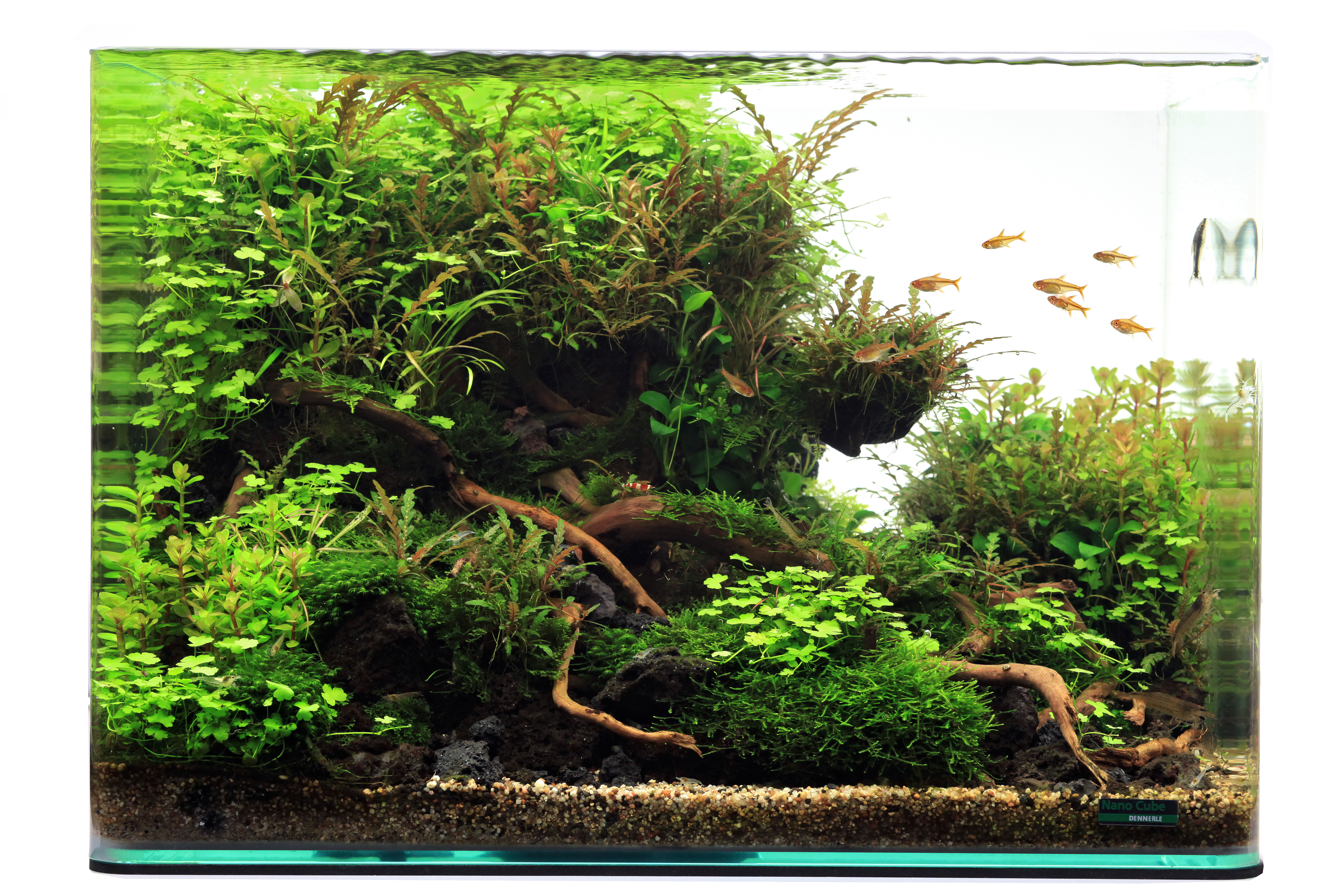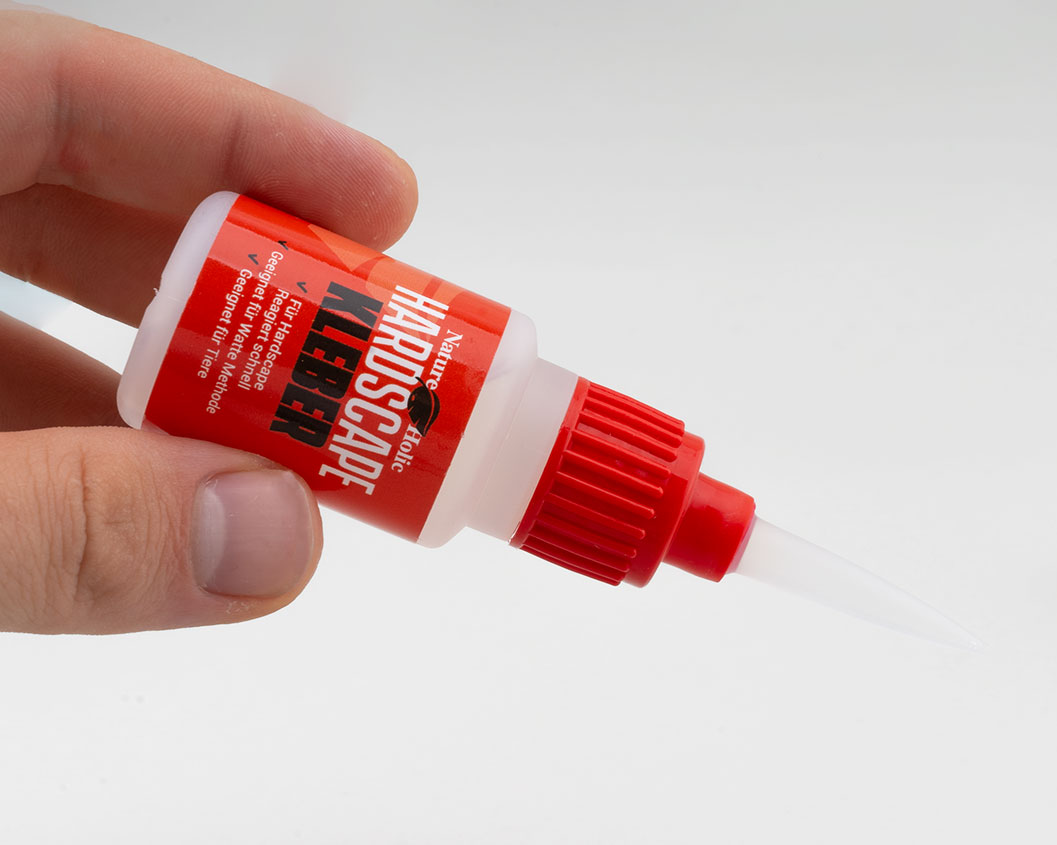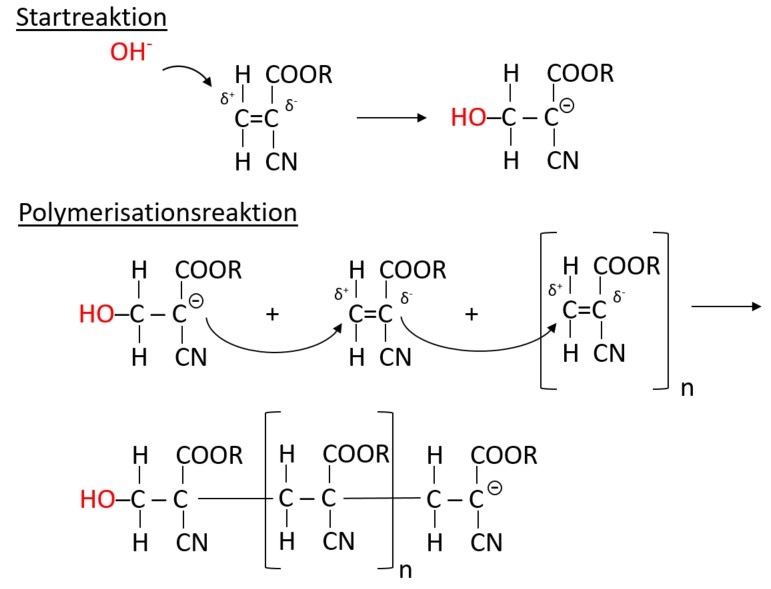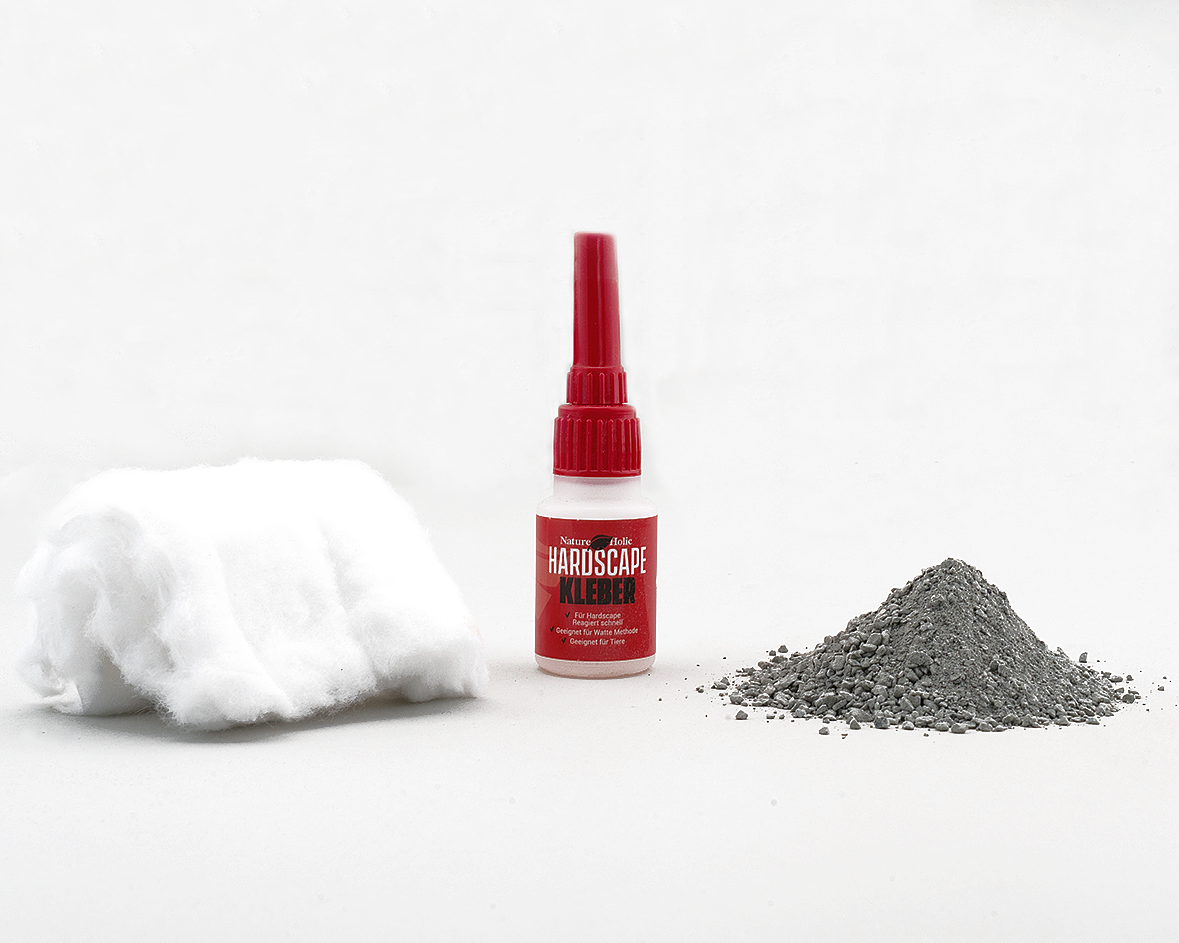The cigarette filter method or wading method for gluing hardscape
Table of contents
- Silicone is not the ultimate
- Cigarette filters and liquid adhesives as alternatives
- Chemical basics
- Alternative to the cigarette filter
- Bonding according to the cigarette filter method
- Making glue joints invisible
It is not always possible to find the perfect matching stone or the ideally shaped root for the layout in the aquascape - often you have to improvise and connect several pieces of aquarium decoration. In the case of larger arrangements - not only in the aquascape, crayfish aquariums would also be a sensible option here - it is recommended anyway to secure superstructures made of stones or roots from slipping or shifting by gluing them together. Also back walls or arch formations glued with lava, cave roofs and so on must hold together somehow.

Silicone is not the ultimate
Aquarium-grade silicone stinks of vinegar, it takes over a day to cure (while you have to somehow support the pieces to be glued together, holding for such a long time is not possible), and working with the greasy, goopy silicone compound is also rather unpleasant. Later silicone traces and smears are difficult to remove and are often annoyingly noticeable in the aquascape.
Cigarette filters and liquid glue as an alternative
As a simpler, cheaper and above all very stable alternative, the so-called cigarette filter method has recently become established, especially in aquascaping.
This method of gluing hardscape was first devised by aquascapers from Indonesia. This method takes advantage of the fact that a special non-toxic, very liquid hardscape glue based on cyanoacrylate reacts very quickly with the filter, while a layer of cyanoacrylate glue pure on a stone on the one hand does not hold so well and on the other hand can take a very long time to cure.
On the other hand, of course, the cigarette filter provides a much larger bonding surface, and the fibrous cellulose material conforms much better to the contours of the stones or aquarium roots.

Chemical basics
Ultimately, liquid adhesive with cyanoacrylate consists of a plastic that has not yet polymerized and is present in solution - that is, the molecules have not yet bonded in it. When it sets, polymerization takes place, and then the molecules of the cyanoacrylate bond. This is a polyaddition. Cyanoacrylate polymerizes when it comes into contact with water or oxygen.
The cigarette filter works so well for bonding because the more oxygen it comes into contact with, the better the adhesive sets. The large surface area of the fibrous material does just that. The capillary action of the material causes the cyanoacrylate adhesive to spread very quickly over the entire surface of the cigarette filter, giving it plenty of contact with oxygen. The adhesive sets correspondingly quickly. Heat is generated in the process, as in any polymerization. The faster the process, the hotter it gets - smoke may even develop as the adhesive cures.

Alternative to the cigarette filter
Cigarette filters are not without controversy as an adhesive material in aquascaping - they can be contaminated with pollutants. A good (and cheaper) alternative is, for example, NatureHolic Hardscape Wadding made of synthetic fibers, which is guaranteed to be free of pollutants and does not pollute the water.

Gluing according to the cigarette filter method
Gluing with cigarette filters or alternatively hardscape absorbent cotton is not difficult. First, you put the root pieces or stone chunks together as they will later lie. It looks most natural, if the structures of the pieces show approximately in the same direction - especially with wood or stones very clear directions can be recognizable in the material itself, which you should pay attention to when gluing them together. Also, the pieces should tend to taper outward.
Once you have a rough idea of how the hardscape should look later, you can start gluing it together. Start on one side and work your way to the other side step by step.
Now you take a small piece of cotton and press it together until it is more compact. Place it between the stones or roots to be glued and hold the pieces in position. Then the piece of absorbent cotton is properly soaked with the liquid NH Hardscape Adhesive. However, nothing should run next to it, because the hardscape glue dries white and you would see running traces later on the stone or root.
Now you have to wait until the glue has set. Thanks to the connection with the hardscape absorbent cotton, this is much faster than with pure glue, but can take a few minutes depending on the size of the glued connection. During polymerization, heat is released, which can also result in a certain amount of smoke - don't be alarmed!
Making glued joints invisible
It is not always possible to hide the glue joint invisibly between the aquarium roots or stones that you want to glue together. To make the white batting in the scaped layout less noticeable later, you can sprinkle it generously with stone powder or wood powder to match the color of the aquascaping materials while the glue is still wet. If the glue has already hardened, simply apply another thin layer of fresh hardscape glue. The powder is pressed on well with your finger, and the residue is removed with a soft brush, blown away, or simply shaken off in the case of smaller decorative elements for the aquarium.
Another good way to cover the glued areas is to plant the hardscape with moss or Java fern, Bucephalandra, Congo fern, Hygrophila pinnatifida or an Anubias. It is best to use a cyanoacrylate-based plant adhesive, which is also non-toxic but not quite as liquid, such as NatureHolic plant adhesive to fix the planting in the aquascape
![]()

Schutz
Wie kann ich mich vor den Dämpfen schützen, die entstehen?